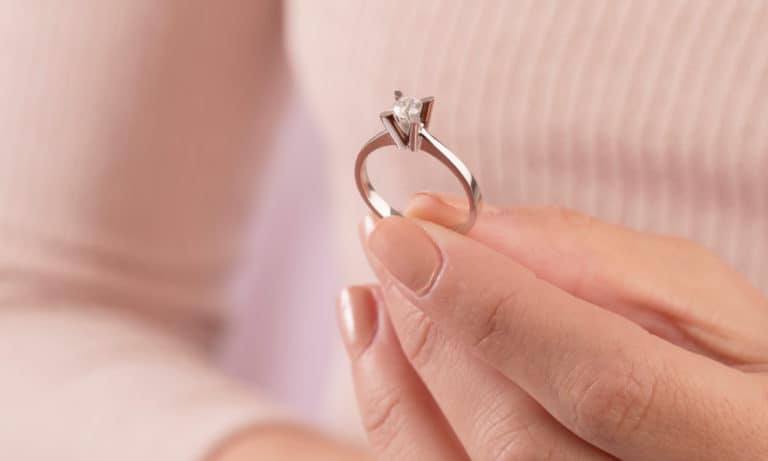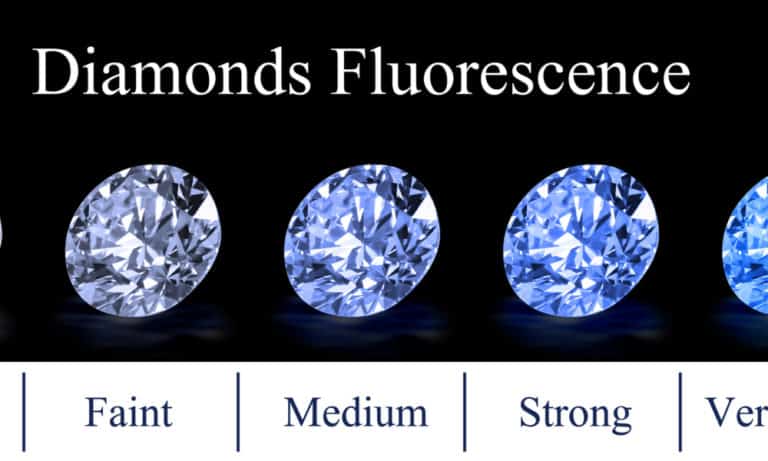
What first comes to your mind when you hear about the term raw diamond? Well, this aspect is mentioned when talking about natural diamonds and sometimes artificial ones. To help you better understand that, we’ll discuss raw diamonds and how to identify a raw diamond.
As we all know, making a refined diamond involves a lot of work. No diamond is born beautiful. Miners cut them from their natural forms, which are seen as ugly and rough. So, what is the meaning of a raw diamond? Let’s dive in!
What is a raw diamond?
A raw diamond or rough diamonds are the uncut forms of fine diamond. It takes ages for these stones to form and remain untouched before mining industries come to mine them. However, it’s only the volcanic eruptions that make them available for us humans to get them.
It’s not surprising that the industries remove cut diamonds a long way from how they initially looked. The high heat and pressure from the volcanoes make the carbon atoms come together and form a structure. After cooling, they will create crystals that are rough diamonds.
On most occasions, raw diamonds look like a collection of pale-colored glasses. You should not expect these stones to shine with their oily appearance since they are yet to be cut. Additionally, rough diamonds have a high gem quality, and only those that are very pale and colorless pass the test.
https://www.youtube.com/watch?v=pcNXLtzOi7I
But how will you know that this stone is a raw diamond? Let’s go into the next section to see how you can identify a rough diamond.
Tips for identifying a raw diamond
It is hard to find rough diamond while walking out there. Seemingly, they are rare and are primarily found in mining sites, but it doesn’t mean that you will never come across one. It’s not easy to separate them from refined diamonds, but here are the things you can focus on to identify the raw diamonds.
1. Focus on the gravity
If you are looking for a rough diamond, you should know about the specific gravity of these stones. All diamonds have a gravity ranging from 3.5 to 3.53 g/ml, which is the ratio of the density of the stone to a pure liquid having a thickness of 1 g/ml. However, be careful not to confuse this gem’s identity with quartz with a gravity of 2.6 to 2.7.
With this gravity, it’s easy to separate the raw diamond from other diamonds. Additionally, you can use this aspect to separate diamonds from other gemstones using shaker tables. Below is a procedure of how to use this tool:
- Fill a clear and normal-sized drinking glass and fill it with water to a 3/4 level.
- Then drop the stone you have into the glass.
- If it sinks, the stone is a genuine raw diamond. But if it floats, it’s fake.
2. Test for the thermal absorption
https://www.youtube.com/watch?v=Sc15gBiW61s
Among all gemstones, diamonds are the best heat absorbers. You can confirm this on your stone using diamond testers. These tools are hand-held and have a metal head that comes in contact with the diamond being tested.
Have you ever wondered how it works? It provides a small amount of heat and measures how fast the stone takes in the heat. A good tester will tell if your stone is a raw diamond or just another beautiful stone.
Every reputable jewelry shop has a diamond tester. So, you don’t have to buy this item to see if your stone is a genuine diamond.
3. Do a hardness test
It’s without a doubt that every diamond, rough or refined, is the hardest among all gemstones. This gem has the highest rating on the Mohs scale of hardness which ranks minerals from softest to hardest. But if you have a stone, how will you test for its hardness level?
Well, don’t scratch a glass using the suspected stone. On the Mohs scale, glass has a rating of 5.5 which means that most stones looking like a diamond can scratch it. Additionally, they are more common compared to diamonds, so the test will not be reliable.
To get good results, scratch corundum. Surprisingly, the stone has a rating of 9 on the Mohs scale and includes ruby and sapphires. If your stone scratches corundum, there are high chances that it’s a diamond.
However, there are some metals like cubic zirconia and moissanite which are scratch-resistant. So, the hardness test is not as reliable as other tests like the thermal test.
4. Use the Ultraviolet (U. V) light test
While checking for the originality of your gem, know that 30 percent of diamonds glow blue under a shortwave U. V light. It will happen after you specially place a diamond under the U. V light. However, some will shine and produce other colors like yellow, red, or orange, making this method not fully reliable.
With all these tests, it’s best to use the tester tool for reliable results. Also, other methods can use to know if your stone is a raw diamond. Below are some of the ways:
- Heat the stone to see if it will break. If it doesn’t, there is a high possibility that it’s a raw diamond.
- Use a fog test.
- Look for the crystal form of the diamond.
What are the different types of raw diamonds?
Across the world, you’ll find three types of raw diamonds. It’s from this point that most people go ahead to cut them and acquire refined ones. Here is a brief explanation of these types:
Natural raw diamonds
These raw diamonds are the ones that mining industries remove from the earth. However, the gems are expensive because of all processes involved in getting them from their sources. All along, companies mine these gems in their raw state, but below are the world’s famous rough diamonds.
- Sergio raw diamond: It’s the largest rough diamond ever to exist. It weighs 3,167 carats. Sadly, you can only use it for industrial purposes and not to make jewelry.
- Cullinan diamond: This raw gemstone is one of the most treasured in the world. It weighs 3,106.75 carats, and you can use it in both the industrial and jewelry sector. Additionally, it gave birth to the excellent star of Africa, which has 530.4 carats.
- Tiffany Yellow diamond: With a weight of 287.4 carats, this rough diamond is one of the biggest yellow diamonds ever to exist. You can use it for both industrial purposes and the jewelry sector.
- Taylor-Burton Diamond: Although it’s not the biggest, this diamond is loved by many people. At first, before being cut, it weighed 241 carats.
- Salt and raw pepper diamonds: These gems are also rough diamonds, so don’t be surprised. The difference is that they have many colors like non-clear and grey. Rose-cut diamonds come from raw salt and pepper diamonds. However, they lack a large surface area which can make you doubt them to be natural diamonds.
Remember, there might be other natural raw diamonds that you will come across apart from those mentioned.
Lab raw diamonds
These are raw diamonds that come from lab processes which means the costs of mining are not involved. Remember, they are not fake rough diamonds because they have the same features as the natural diamonds mined from the earth. Surprisingly, these gems have more advantages compared to having the natural ones.
Lab-grown diamonds are cheap, friendly to nature, and free of any ethical issues.
Uses of raw diamonds
Just like refined diamonds, rough diamonds are essential. Before being cut, these gems still have some of their best qualities. Below are the primary uses of raw diamonds.
Making jewelry
Many people in the jewelry sector use raw diamonds to make their products. For a long time now, these traders use these gems as a sign to show love. Apart from that, some retailers sell the rough diamonds as ornaments without cutting them.
Industrial purposes
Firms use these diamonds to do various industrial purposes. Most people call them industrial diamonds. Even though some only use them to make jewelry, these raw diamonds end up doing demanding activities.
Companies put the raw diamond bits into cutting blades to improve the performance. Others use diamond saws to make grooves inside the concrete.
When it comes to drilling, these companies use raw diamonds to drill oil. The metal tops have diamond grains to help.
Additionally, rough diamonds make good polishing tools. These companies make the diamonds into a paste that helps in polishing items.
Conclusion
With this information, there is much to learn about raw diamonds. Sometimes, the odds can never be on your side to find the true one, especially when you want to see if it’s a genuine raw diamond or not. But, worry not, ensure you apply the tips and other insights in the article, and all shall be well.
Did you gain some experience and confidence when talking about raw diamonds? Leave a comment to let us know. Also, if you have any additional information about these gems, we would love to hear from you.







